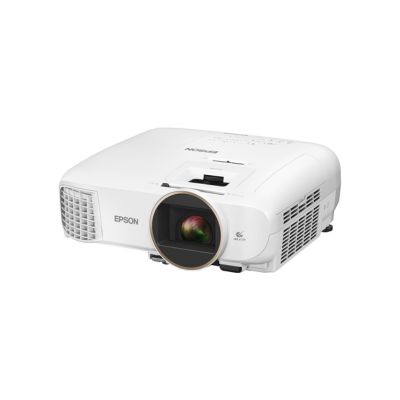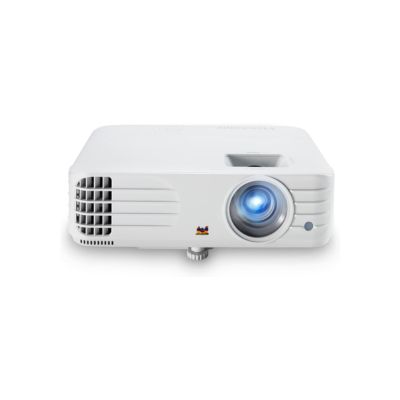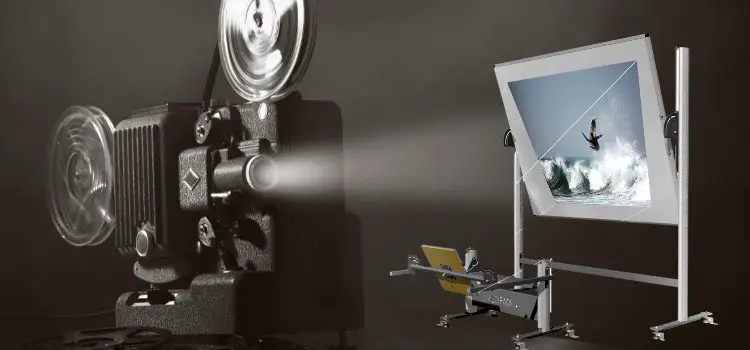Usually, the projectors are the first choice for Netflix and other content enthusiasts. So, it is mostly used in Home theatres, and the features like rear projection can be very useful in such conditions. Often, tech enthusiasts find themselves thinking, “Do You Need Special Projector For Rear Projection?” While setting up a personalized cinematic experience at home or in a professional setting, you must know the advantages of using rear projection as your first choice. Unlike the common front projection, rear projection means to project the projector light to screen from the back, But this surely raises questions about the changes in the equipment of the projector setup.
Any standard high-quality projector can typically serve the purpose for both front and rear projection, the process is not as simple as it seems to be but anyone understanding the process can carry it out easily. The equipment selection is not only limited to projector, it also depends upon the material of projector screen and lighting of the room. So, when searching about the question, “Do You Need Special Projector For Rear Projection?” one needs to consider the entire projection ecosystem, as the effectiveness of rear projection isn’t determined by the projector alone.
What Is Rear Projection In Projectors?
Rear projection in projectors is a technique where the light source beams the image onto the back of the screen, which then diffuses the light to the viewer’s side. This method provides stunning visuals that are visible from multiple angles without the image quality being compromised. Optimal room lighting, careful positioning, and appropriate screen material are all part of the successful implementation of rear projection. Even though any high-grade projector can feasibly be used for rear projection, the question “Do You Need Special Projector For Rear Projection?” still requires a nuanced answer that takes into account the entire projection system.
Do You Need Special Projector For Rear Projection: Explained
The query, “Do You Need Special Projector For Rear Projection?” calls for an in-depth exploration of the factors involved in rear projection. Rear projection, unlike front projection which projects images onto the front of a screen, relies on images being projected onto the back of a screen. This setup grants the advantage of maintaining image quality even from various viewing angles.
At the core of the matter, it’s significant to understand that any high-quality projector can potentially be utilized for both front and rear projection. However, the effectiveness of a rear projection setup hinges on several factors beyond the projector itself.
Firstly, the screen material is instrumental in determining the success of rear projection. Some screen materials, such as gray or silver screen fabrics, are known to enhance the image’s contrast and color accuracy when used in conjunction with rear projection. Therefore, if one is contemplating using a projector for rear projection, the compatibility between projector and screen material becomes a paramount consideration.
Secondly, the lighting conditions in the room play a substantial role. Rear projection generally dominates in environments with low ambient light as excessive light can dilute the image, making it appear washed out. Hence, a viewing area with ample ambient light might necessitate a projector with a higher lumen rating to ensure the effective execution of rear projection.
Lastly, the overall setup and positioning of the projector need careful planning. Rear projection requires an adequate distance between the projector and the screen. If your space is limited, a short-throw projector, designed specifically for shorter distances, might be the more fitting choice.
Best Projector For Rear Projection
When it comes to the best projectors for rear projection, several models stand out due to their superior performance, versatility, and advanced features.
1. Epson Home Cinema 2150
Among the top contenders is the The Epson Home Cinema 2150 is a popular choice among home theater enthusiasts, thanks to its superior imaging capabilities. This projector offers Full HD resolution, ensuring clear and sharp picture quality. Its high contrast ratio boosts the difference between the darkest and brightest areas of an image, providing a stunning visual depth. Additionally, with an impressive 2,500 lumens of both color and white brightness, the Epson Home Cinema 2150 can effectively handle rear projection setups in rooms with ambient light.
Its flexibility, combined with superb image quality, makes it a front-runner in the world of rear projection. Known for its exceptional image quality and brightness, the Epson Home Cinema 2150 offers Full HD resolution, a high contrast ratio, and an impressive 2,500 lumens of color and white brightness, making it highly capable for rear projection setups, even in rooms with ambient light.
Epson Cinema 2150

Specifications
- Brand: Epson
- Model: Home Cinema 2150
- Resolution: 1080p (1920 x 1080)
- HDR Compatibility: Yes
- Brightness: 2500 Lumens
2. Optoma GT1080HDR
Another strong contender is the Optoma GT1080HDR. Its outstanding feature is its short-throw capability, which makes it ideal for rear projection in smaller spaces where the projector-to-screen distance is limited. Additionally, with its high contrast ratio and HDR compatibility, it delivers vibrant colors and deep blacks for a superb viewing experience.
The Optoma GT1080HDR is another noteworthy model for rear projection setups, particularly known for its short-throw capabilities. This projector is designed to produce large images even at close distances, making it an ideal pick for smaller spaces or rooms with limited projector-to-screen distance. In addition to this, it features a high contrast ratio and HDR compatibility, ensuring vibrant colors and deep blacks for an immersive viewing experience. Its strong performance and compact design make the Optoma GT1080HDR a compelling choice for rear projection needs.
Optoma GT1080HDR

Specifications
- Brand: Optoma
- Model: GT1080HDR
- Resolution: 1080p (1920 x 1080)
- Other Features: Gaming Projector
- Brightness: 3800 Lumens
3. ViewSonic PX701HDH
For those on a budget, the ViewSonic PX701HDH delivers impressive performance at an affordable price point. Despite its lower cost, it doesn’t compromise on quality, boasting Full HD resolution, a high contrast ratio, and a brightness of 3,500 lumens.
The ViewSonic PX701HDH is an excellent choice for those who are budget-conscious but still desire high-quality rear projection. Despite its affordability, this projector does not compromise in delivering a high-quality viewing experience. It boasts a Full HD resolution, ensuring vivid and crisp images. With a high contrast ratio, it accentuates the difference between light and dark areas of an image, offering a richer visual experience. Furthermore, with a brightness of 3,500 lumens, the ViewSonic PX701HDH can effectively handle rear projection, even in rooms with some ambient light. Its robust performance at a budget-friendly price decisively places it as a worthy contender in the realm of rear projection.
ViewSonic PX701HDH

Specification
- Brand: ViewSonic
- Model: PX701HDH
- Resolution: 1080p (1920 x 1080)
- Other Features: 16ms Latency
- Brightness: 3500 Lumens
Conclusion
In conclusion, the question “Do You Need Special Projector For Rear Projection?” doesn’t have a straightforward ‘yes’ or ‘no’ answer. While a specialized projector isn’t specifically required, the nuanced interplay of screen material, lighting conditions, and spatial constraints may influence the type of projector that would be best suited to your rear projection needs.

